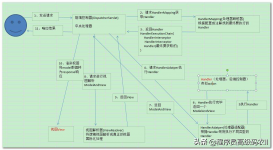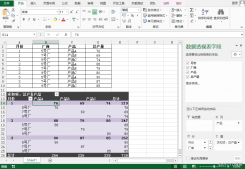freemarker和thymeleaf是模板引擎。在早前我们使用struts或者springmvc等框架的时候,使用的都是jsp,jsp的本质其实就是一个servlet,其中的数据需要在后端进行渲染,然后再在客户端显示,效率比较低下。而模板引擎恰恰相反,其中的数据渲染是在客户端,效率方面比较理想一点。前后端不分离的话用模板引擎比较好,前后端分离的话其实用处并不大很大。spring官方比较推荐的是thymeleaf,其文件后缀是html。本篇文章我们主要来看看springboot整合freemarker,springboot整合thymeleaf我们将在后面的文章中讲解。
先来看一下项目文件目录:

首先,pom.xml中导入freemarker的依赖:
|
1
2
3
4
|
<dependency> <groupid>org.springframework.boot</groupid> <artifactid>spring-boot-starter-freemarker</artifactid></dependency> |
在application.properties(或yml)配置文件中加入freemarker相关配置:
|
1
2
3
4
5
6
7
8
9
10
11
12
|
# freemarker静态资源配置# 设定ftl文件路径spring.freemarker.tempalte-loader-path=classpath:/templates# 关闭缓存,及时刷新,上线生产环境需要修改为truespring.freemarker.cache=falsespring.freemarker.charset=utf-8spring.freemarker.check-template-location=truespring.freemarker.content-type=text/htmlspring.freemarker.expose-request-attributes=truespring.freemarker.expose-session-attributes=truespring.freemarker.request-context-attribute=requestspring.freemarker.suffix=.ftl |
这里指定了freemarker文件的路径是classpath/templates,在resources文件夹下的templates新建freemarker文件夹,并且在其中新建index.ftl(上面配置文件中已经指定了freemarker模板的文件后缀为ftl):
|
1
2
3
4
5
6
7
8
9
10
11
12
13
|
<!doctype html><html><head lang="en"> <meta charset="utf-8"/> <title></title></head><body>freemarker模板引擎<h1>${resource.name}</h1><h1>${resource.website}</h1><h1>${resource.language}</h1></body></html> |
我们在resources下新建resource.properties:
|
1
2
3
|
com.haozz.opensource.name=wangshucom.haozz.opensource.website=www.haozz.top:18158/com.haozz.opensource.language=chinese |
在springboot启动类统计目录下新建utils包,在其中新建resources类(此处使用配置文件引入相关数据):
|
1
2
3
4
5
6
7
8
9
10
11
12
13
14
15
16
|
package com.haozz.freemarkerdemo.utils;import org.springframework.boot.context.properties.configurationproperties;import org.springframework.context.annotation.configuration;import org.springframework.context.annotation.propertysource;//表示这个类是一个读取配置文件的类@configuration//指定配置的一些属性,其中的prefix表示前缀@configurationproperties(prefix = "com.haozz.opensource")//指定所读取的配置文件的路径@propertysource(value = "classpath:resource.properties")public class resource { private string name; private string website; private string language; //...setter and getter} |
新建controller包,新建freemarkerctrl类:
|
1
2
3
4
5
6
7
8
9
10
11
12
13
14
15
16
17
|
package com.haozz.freemarkerdemo.controller;import com.haozz.freemarkerdemo.utils.resource;import org.springframework.beans.factory.annotation.autowired;import org.springframework.stereotype.controller;import org.springframework.ui.modelmap;import org.springframework.web.bind.annotation.requestmapping;@controller@requestmapping(value = "/ftl")public class freemarkerctrl { @autowired private resource resource; @requestmapping(value = "index") public string index(modelmap map){ map.addattribute("resource",resource); return "freemarker/index"; }} |
这里的modelmap就相当于springmvc中的modelandview,其中的很多方法也很类似,我们这里返回的字符串就是freemarker模板的路径,不用写后缀,因为配置文件中已经指定了后缀为.ftl
浏览器发起请求,得到结果:

这样,springboot整合freemarker就好了。
我们再来试一下表格的形式。
freemarkerctrl中新增方法:
|
1
2
3
4
5
6
7
8
9
10
11
12
13
14
15
16
17
|
@requestmapping(value ="center") public string center(modelmap map){ map.put("users",parseusers()); map.put("title","用户列表"); return "freemarker/center/center"; } private list<map> parseusers(){ list<map> list= new arraylist<>(); for(int i=0;i<10;i++){ map map= new hashmap(); map.put("name","kevin_"+i); map.put("age",10+i); map.put("phone","1860291105"+i); list.add(map); } return list; } |
在resources/templates/freemarker下新建center文件夹,新建center.ftl:
|
1
2
3
4
5
6
7
8
9
10
11
12
13
14
15
16
17
18
19
20
21
22
23
24
25
26
27
28
29
30
31
32
33
34
35
36
37
38
39
40
|
<html lang="zh-cn"><head> <meta charset="utf-8"/> <title>${title}</title> <style> table { width: 50%; font-size: .938em; border-collapse: collapse;/*边框合并*/ } th { text-align: left; padding: .5em .5em; font-weight: bold; background: #66677c;color: #fff; } td { padding: .5em .5em; border-bottom: solid 1px #ccc; } table,table tr th, table tr td { border:1px solid #0094ff; }/*设置边框*/ </style></head><body><table> <tr> <th>name</th> <th>age</th> <th>phone</th> </tr> <#list users as user> <tr> <td>${user.name}</td> <td>${user.age}</td> <td>${user.phone}</td> </tr> </#list></table></body></html> |
浏览器请求:

可以看到,在center.ftl中,我们使用了<#list users as user>的写法,这个相当于jstl表达式中的c:foreach。而users集合我们在freemarkerctrl已经初始化了。
总结
以上就是这篇文章的全部内容了,希望本文的内容对大家的学习或者工作具有一定的参考学习价值,谢谢大家对服务器之家的支持。如果你想了解更多相关内容请查看下面相关链接
原文链接:https://blog.csdn.net/hz_940611/article/details/80706772















